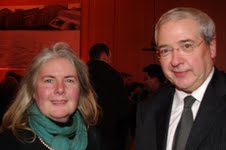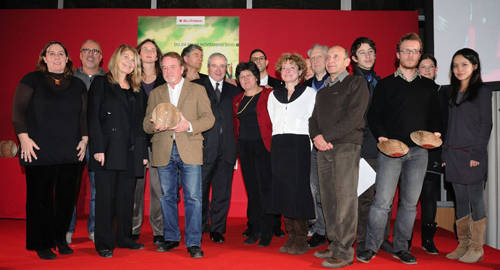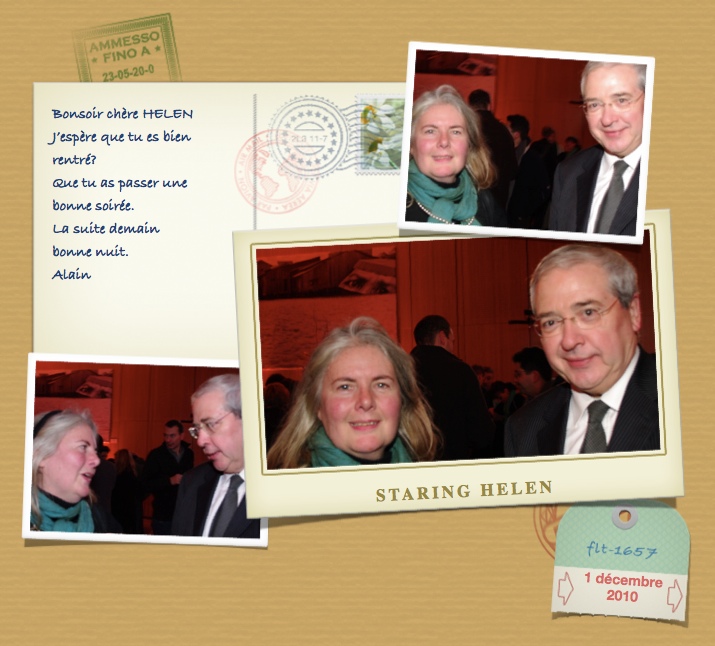|
|
||
|
Pro Tools
FILMFESTIVALS | 24/7 world wide coverageWelcome ! Enjoy the best of both worlds: Film & Festival News, exploring the best of the film festivals community. Launched in 1995, relentlessly connecting films to festivals, documenting and promoting festivals worldwide. Working on an upgrade soon. For collaboration, editorial contributions, or publicity, please send us an email here. User login |
Mary PickfordTIMELINE:Mary Pickford, The Movies, and Entertainment Chronology 1870: A half century y of tremendous industrial growth begins in the U.S. Millions of European immigrants will arrive over the coming decades, seeking work. 1878 October 19: Eadweard Muybridge’s photographs of a horse’s stride are published in Scientific American. The groundbreaking images lead to further experimentation in the area of motion pictures. 1882 David Belasco enters Broadway and makes a name for himself as a theater producer. 1888 George Eastman puts the easy to use Kodak camera on the market. It lets people take the first “snapshots,” using a new invention – photographic film. 1890-92 Thomas Edison’s assistant, William Dickson, develops a motion picture camera called the Kinetograph. Two years later he will unveil a primitive projector called the Kinetoscope. For the first time ever, it is possible to project film images. 1892 April 8: Gladys Louise Smith, the future Mary Pickford, is born in Toronto to Irish working class parents: John Charles and Charlotte. 1893 Pickford’s sister Charlotte (Lottie) is born; the exact date is not registered. 1895 Auguste and Louis Lumiere’s Cinematographe, a projector that shows 16 frames per second, is used for the world’s first public film screening. Pickford’s brother John (Jack) is born. No date is registered. 1896 Vaudeville entertainment enters it heyday in America, presenting short motion picture films interspersed with juggling, music, magic tricks, and skits. 1898 The Spanish American War begins. Theodore Roosevelt’s Rough Riders secure victory at San Juan Hill in Cuba on July 1. February 11: Pickford’s father, John Charles, dies from a cerebral hemorrhage. 1900 January 8: Not yet eight years old, Pickford debuts in her first stage performance of The Silver King at Toronto’s Princess Theatre. The building is the city’s first public structure with electric lights and can seat more than 1,500 people. On opening night, Pickford performs for Canadian soldiers on their way to South Africa to serve in the Boer War. The mood in the theatre is electric and young Gladys is swept away by the excitement. April 9: Pickford plays the lead in a Vaudeville sketch, The Littlest Girl. 1901: April 8: At the age of nine, Pickford plays Little Eva, the daughter of a slave owner in Uncle Tom’s Cabin. Fall: Pickford and her family travel to Buffalo, New York, learning their lines on the way, to perform in At the Little Red Schoolhouse. Their trip is the beginning of more than five years of touring with various acting companies. With the arrival of electricity, Broadway sets out white lights stretching from 13th to 46th Street, inspiring the nickname “the Great White Way.” 1904 Marcus Loew founds Loews Theatres. It will become the longest-lived theater chain in America. 1905 John Harris and Harry Davis coin the term “nickelodeon” when they open a theater in Pittsburgh, Pennsylvania. The name is derived from the cost of entry – a nickel – and the Greek word for theater, “odeon.” 1907 Tired of life on the road, Pickford, still known as Gladys Smith, auditions for David Belasco on Broadway. The producer changes her name to Mary Pickford and gives her a salary of $25 a week ($568 in 2008). December 3: Pickford makes her Broadway debut in a William De Mille play, “The Warrens of Virginia.” 1908 The Motion Picture Patents Company, known simply as “the trust” is established to control the film industry. Ten producers are granted licenses to use equipment authorized by the Trust. Everyone else is running illegal film production operations. Director D.W. Griffith’s first film, The Adventures of Dollie, debuts in New York. 1909 When the show she is performing in folds and Belasco cannot guarantee future roles, Pickford is pushed by her mother to find work in film. She goes to Biograph Studios in New York and watts for an interview with D.W. Griffith. She sees film acting as a step down, but her family’s financial need leaves her little choice. She joins Biograph, earning a salary of $100 a week ($2325 in 2008 dollars). With the quick production timetables of the era, she will act in dozens of short films, including a 1911 piece, The Dream, with co-star Owen Moore. 1911 January 7: Pickford marries Owen Moore. Her mother disapproves of Moore; Pickford feels compelled to hide the marriage from her family and the public for several months. February11: The first issue of Motion Picture Story Magazine is published, and its competitor, Photoplay, appears soon after, signaling the birth of fan culture. Photoplay will vote Pickford “Number One actress of the Year 15 times.” 1912 July 12: New York society elites attend the premiere of Queen Elizabeth, a film starring Sarah Bernhardt, at the Lyceum Theatre. The event helps extend film’s reach to the upper class. The New York Hat is released. It is the 70th – and last – film Pickford will make for Biograph and D.W. Griffith. William Fox establishes the Fox Film Foundation, which becomes one of Hollywood’s foremost studios. 1913 Adolph Zukor woos Mary Pickford for his company, Famous Players, at $500 a week (over $10,870 in 2008 dollars). She is 21 and the highest paid actress in the world. A British born actor Charlie Chaplin, lands his first film contract in the U.S. with Keystone Studios. 1914 Pickford stars in Tess of the Storm Country, her fifth feature, and first in a series for Famous Players. Her celebrity hits extravagant new levels following films like Tess and Rags, as she portrays a new type of heroine, feisty and independent. 1915 The US Government orders the Motion Picture Patents Company disbanded due to trade violations. Griffith’s controversial Birth of a Nation stuns audiences with its inflammatory social commentary and revolutionary film techniques. 1916 Adolph Zukor’s Famous Players Film Company renews Pickford’s salary to record $10,000 a week (over $196,000 in 2008 dollars). Griffith’s second masterwork, Intolerance, is released in theaters to counter controversy over his earlier film, Birth of a Nation. 1917 American enters World War 1. Pickford tours the US with Fairbanks, Chaplin and Marie Dressler to support America’s involvement. Demand for motion pictures increases as Americans seek an escape during war time. Pickford, at age 25, stars in the popular Rebecca of Sunnybrook Farm and the Poor Little Rich Girl, playing young girls in both features. 1918 November: World War I ends. Pickford stuns audiences with her dramatic acting in Stella Maris. Some critics say the film is her best work.
1919 January 1: Prohibition begins. The Eighteenth Amendment is ratified, placing a nationwide ban on the manufacture and transportation of intoxicating beverages. Pickford, along with actors Douglas Fairbanks and Charlie Chaplin, and director D.W. Griffith, form United Artists to produce and distribute their own films. Pickford stars in Daddy-Long-Legs, her first film as an independent producer. 1920 March 28: Pickford and Fairbanks both divorce their spouses so they can marry. Their marriage is hailed as “the marriage of the century” and the public embraces them as Hollywood royalty. The couple resides in southern California, in a spacious former hunting lodge the press calls “Pickfair.” Over the years, it will serve as a gathering place for politicians, journalists, artists and foreign diplomats. United Artists releases Pollyanna, with Pickford playing the lead; it grosses $1.1 million ($11.7 million in 2008 dollars). 1921 Pickford plays both a young boy and his mother in the screen version of Little Lord Fauntleroy. The movie is a box office success. Critics and fans alike commend the innovative cinematography and Pickford’s pleasing performances. 1923 Warner Brothers, one of the first large film studios, is founded. Rosita, collaboration between Pickford and German director Ernst Lubitsch, makes over a million dollars and plays to more sophisticated audiences. 1924 Columbia and Metro Goldwyn (later named Metro Goldwyn Mayer, M.G.M.) are established, joining Warner Brothers as major players in the growing film business. 1926 Warner Brothers releases Don Juan, the first film to feature sound effects and music. With this film, the industry initiates a shift towards talkies, which will turn the silent film industry upside down. The National Broadcasting Corporation is established as a radio network. Pickford departs from her usual upbeat roles to star in Sparrows, a dark film climaxing with an exciting escape scene in which Pickford helps captive children escape from a “baby farm.” 1927 Pickford stars in My Best Girl with her future husband Buddy Rogers. It will be her last silent film. Pickford and Fairbanks help found the Academy of Motion Picture Arts and Sciences. The Jazz Singer is released, with Al Jolson in the starring role. The first film to feature talking and singing, it electrifies the industry. May 20: Charles Lindbergh makes the first solo flight across the Atlantic, traveling from New York to Paris in 33-1/2 hours. September 7: Philo Farnsworth, an inquisitive Utah boy, conceives of television. 1928 Pickford’s mother Charlotte dies of breast cancer. The event leaves Pickford devastated and she cuts off her famous curls in front of journalists. The story makes the front page of the New York Times. Radio-Keith Orpheum (R.K.O.) joins the ranks of the major Hollywood studios. The company is created in the merger of the Radio Corporation of America (R.C.A.), Film Booking Office (F.B.O.) and Keith-Albee-Orpheum, a major Vaudeville corporation. Hollywood is valued as a $65 million industry with more than 300,000 employees. 1929 October 29: The stock market crash on Black Tuesday leaves millions of Americans penniless and devastated. The Great Depression follows, casting a grim shadow over America. Pickford appears in her first talkie, Coquette. The sound quality is shaky, but the film does well at the box offices, grossing $1.4 million ($17.5 million in 2008). Pickford and Fairbanks star together in The Taming of the Shrew. It is a misguided effort to bolster their stardom, and the film is not a box office success. 1930 April 3: Pickford receives an Academy Award for her performance in Coquette. Unable to make the transition to the talkies, she will find her star on the wane. 1931 Pickford stars in the film musical Kiki, which is the biggest flop of all her films. 1932 Franklin D. Roosevelt becomes the 32nd president and introduces the “New Deal” to help Americans recover from the Depression. 1933 Adolph Hitler becomes Germany’s chancellor. Pickford stars in her last film, Secrets, (her best sound film with good reviews) but which loses money at the box office. January 2: Pickford’s brother Jack dies from various health problems. 1934 Prohibition ends in America. Pickford begins a string of radio ventures with the Mary Pickford Stock Radio Company. Critics pan her screen and stage adaptations for radio and Pickford takes a break from the airwaves until 1936, when she hosts Parties at Pickfair, a radio program providing celebrity gossip from Pickfair events. The show dwells in the ratings cellar, driving Pickford away from radio until the 1940s. 1936 December 9: Pickford’s sister Lottie dies of a heart attack. January 10: Under the strain of two faltering public careers, the “marriage of the century” ends in divorce. Though Pickford and Fairbanks retain strong feelings for each other, they will both remarry. 1937 June 24: Pickford marries Buddy Rogers, her costar from My Best Girl (1927). 1938 Mary Pickford Cosmetics are introduced to the market. Pickford appears in advertisements for the new products. 1939 August: Germany and Russia sign a non-aggression pact, paving the way for Germany to invade Poland and start World War II. The U.S. will join the Allied effort in 1941. Pickford will host parties for the troops at Pickfair. December 12: Fairbanks dies of a heart attack. Pickford is crushed. 1941 The Society of Independent Motion Picture Producers is founded by Pickford, Charlie Chaplin, Walt Disney, Orson Welles, Samuel Goldwyn, David O. Selznick, Alexander Korda, and Walter Wanger. The Society aims to preserve the rights of independent producers in an industry overwhelmingly controlled by studios. Citizen Kane (1941) and Fantasia (1940) are among the acclaimed film produced by Society members. 1943 Pickford becomes a mother at age 51. She adopts six-year-old Ronald Charles Rogers. Less than a year later she will adopt a baby girl, Roxanne. 1945 Pickford launches Comet Pictures with Columbia Pictures’ Ralph Cohn. The company releases Sleep, My Love (1948), one of Pickford’s strongest later productions. 1948 July 23: D.W. Griffith dies. The master filmmaker had spent the last years of life out of step with is times and out of work. 1949 With her husband, Buddy Rogers, and a friend, Malcolm Boyd, Pickford opens Pickford-Rogers-Boyd, a radio and television production company with offices in New York. 1956 Pickford sells her shares in United Artists for $3 million ($23.4 million in 2008 dollars), ending her involvement in the nearly 40 year business venture she founded. 1958 Mary Pickford Foundation, an organization that still exists today, is formed. 1965 The Cinematheque Francaise hosts a retrospective of Pickford’s films. Pickford makes a last trip to Paris for the event, where fans rave about her work, then returns to Pickfair and disappears from the public eye. 1976 January 10: Adolph Zukor dies at age 103.
The Academy of Motion Picture Arts and Sciences presents Pickford with a lifetime achievement award. She accepts the award from Pickfair. Audiences are shocked by the old, almost unrecognizable Pickford wearing a wig and false eyelashes. 1977 Charlie Chaplin dies on Christmas Day at age 88. 1979 May 29: Pickford dies at her home at age 87, leaving a legacy of 141 short films and 52 features. Her career spanned nearly a quarter-century, but she did not act in a film for the last 46 years of her life. 1999 April 21: Buddy Rogers dies at age 94.  09.10.2008 | Helen's blog Cat. : Academy Award Adolph Zukor Adolph Zukor’s Famous Players Film Company Al Jolson Alexander Korda America American film directors Birth of a Nation Buffalo Business Business Chaplin Dressler Charles Lindbergh Cinema of the United States Coquette Cuba D.W. Griffith David Belasco David O. Selznick Douglas Fairbanks Douglas Fairbanks electricity Elizabeth Entertainment Entertainment Ernst Lubitsch Fantasia Film Film Booking Office Franklin D. Roosevelt Girl Gladys Louise Smith Harry Davis Hitler Human Interest Human Interest Jack John Charles John Harris Keith Orpheum Keith-Albee-Orpheum Kodak Labor Labor Law Law Loews Lottie Louis Lumière Malcolm Boyd Marcus Loew Marie Dressler Mary Pickford Mary Pickford Mary Pickford Stock Radio Company Metro-Goldwyn-Mayer New York Orson Welles Owen Moore Paris Photoplay Pickfair Pickford Pickford Pittsburgh Pollyanna Radio Corporation of America Ralph Cohn Ronald Charles Rogers Roxanne Russia Samuel Goldwyn San Juan Sarah Bernhardt Scientific American South Africa Tess and Rags, as The Adventures of Dollie The Motion Picture Patents Company The National Broadcasting Corporation The New York Hat the New York Times the New York Times Theodore Roosevelt Thomas Edison Toronto transportation United Artists United Artists United Artists films United Kingdom United States Walt Disney Walter Wanger William Dickson William Fox
|
LinksThe Bulletin Board > The Bulletin Board Blog Following News Interview with IFTA Chairman (AFM)
Interview with Cannes Marche du Film Director
Filmfestivals.com dailies live coverage from > Live from India
Useful links for the indies: > Big files transfer
+ SUBSCRIBE to the weekly Newsletter Deals+ Special offers and discounts from filmfestivals.com Selected fun offers
> Bonus Casino
User imagesAbout HelenThe EditorUser contributionsUser links |

























 Helen Dobrensky
Helen Dobrensky 


